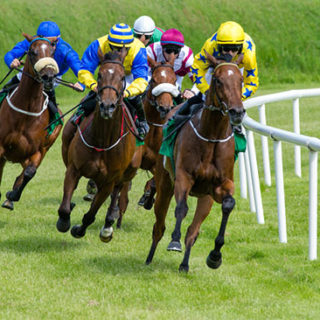Even ravens plan their everyday lives
Our knowledge about the brain is still astoundingly full of question marks. We have yet to learn how memory and many functions of the brain are constructed, both in humans and in animals. The brain and its abilities have been studied in crows, among other animals. Historically, this type of bird has held a prominent role and been considered to be smart. And, with hindsight, quite rightly, as they have highly advanced abilities.
In his research, Mathias Osvath, associate professor of cognitive zoology at the Department of Philosophy at Lund University, has studied both birds of the corvidae family and anthropoid apes. In his studies, he has repeatedly demonstrated the advanced learning processes and social behaviour of ravens, as well as their ability to use tools and plan.
Corvids have generally proven to be so talented that they are compared with anthropoid apes. For example, corvids display complex social skills, including the ability for self-control, developed memory and planning – talents comparable to those of the apes. Several previous studies of the birds’ food-hoarding behaviour have pointed to their good memory and ability to plan.
The reason for choosing ravens, specifically, is that they are easier to work with than most other corvids, says Mathias Osvath, as he shows me around his farm. Mathias Osvath and his colleagues have built three custom-sized aviaries for the ravens, and this is where many of the studies are conducted.
“Generally, we don’t measure and talk about intelligence; we study cognition.”
“The ravens seem to be thriving; already in their second year of life, they had a brood of offspring – something which such young birds hardly ever do in the wild.”
In his latest study, published in the journal Science, Mathias Osvath’s research team showed that ravens have a highly developed planning ability and self-control.

Mathias Osvath, associate professor of cognitive zoology
“They plan when they are to use the tools they are offered to access food, and they can also plan to exchange things with people”, says Mattias Osvath, as we hide inside a small shed next to one of the aviaries.
In the study, the ravens were given tasks they do not face in the wild and, therefore, lack adaptations for: the use of tools and exchanges with human beings.
The ravens were offered different objects, including a tool and a token. The tool opened a device, and the reward was given to the raven later, in a different place. The token could be exchanged with a human being for a reward, which was also given to them later and in another place. The delay from the choice of object until the ravens were able to use it varied – from 15 minutes to 17 hours – during which time they had to store the tool.
“Compared to the apes, the ravens performed significantly better in the exchange tasks, and equally well in the tool tasks, despite the apes being tool-users”, says Mathias Osvath.
Can intelligence really be measured?
“Generally, we don’t measure and talk about intelligence; we study cognition. Cognition can be more or less complex, and even flexible, depending on the context in which it is studied”, says Mathias Osvath.
Brains do not look the same in different organisms; the way they behave is not entirely comparable, and they may have completely different physiology but this does not necessarily mean that any of them lack a function or ability. For example, having a large and powerful brain is no end in itself, as it requires a constant supply of energy. The bigger and more powerful the brain, the more energy is needed to maintain it.
Previous research has shown that birds have advanced abilities and a well-developed brain. In a recently published study [1], the researchers managed to determine the density and number of neurons in the brains of a variety of organisms, says Mathias.
“They counted the number of neurons and studied the number in relation to the size of the brain. In this comparison, song birds (a very large group of birds) and parrots had the highest densities of neurons of all (they have a high density and a relatively large brain). The fact is, corvids have twice the density compared to humans. However, the human brain is so large that the number of neurons by far exceeds that of a bird.”
Therefore, solely measuring the size of the brain is incorrect when mapping cognitive abilities. The number of neurons is at least as important. For example, a raven has 15 times more neurons than a dog.
In a new major project called “Dinosaur cognition”, Mathias Osvath and his research team want to understand the basis for the birds’ cognitive evolution.
The name of the research project comes from the fact that birds are quite simply modern living dinosaurs. The most primitive living creatures today that are related to birds and other dinosaurs are crocodiles. By studying and comparing the most primitive birds (e.g. ostriches, tinamous, emus) with different species of crocodiles, the researchers hope to provide a picture of how cognition developed over time. Perhaps we will find out what cognition was like and how it worked in some dinosaurs that lived on Earth many millions of years ago.
Text: Peter Frodin
Photo: Peter Frodin
[1] Olkowicz S, Kocourek M, Lucan RK, Portes M, Fitch WT, Herculano-Houzel S, Nemec P: Birds have primate-like numbers of neurons in the telencephalon. Proc Natl Acad Sci U S A 2016, 113:7255-7260.






